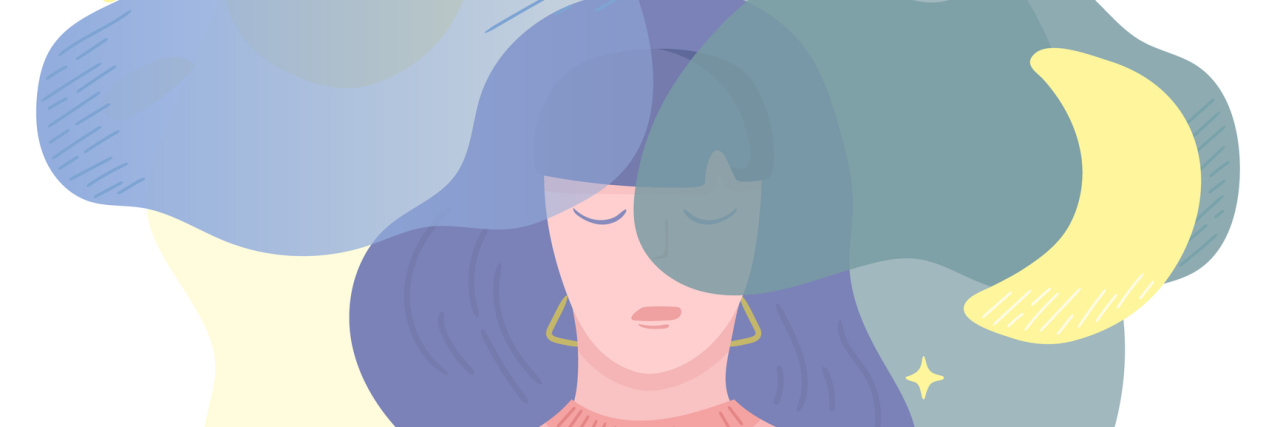Being unable to get to sleep, feeling excessively tired or perhaps sleeping too much; whether it’s for a short period of time or a chronic problem, the issue of sleep is one that we all seem to struggle with at some point or another. While we are all aware of the all too common insomnia, there are many other sleep disorders that are not as well known — some of which may surprise you.
1. Fatal familial insomnia.
In this form of insomnia, you may begin experiencing difficulties falling and staying asleep, occasional muscle twitches, spasms and stiffness, as well as frequent kicking and movement when you have finally fallen asleep. After time, you may find you cannot sleep at all and may begin to experience deterioration in mental function and coordination. Eventually the heart rate may become rapid, blood pressure may increase and you may sweat profusely. This is a serious type of insomnia that can be fatal between 7 to 73 months after symptoms begin.
2. Sleep apnea.
Sleep apnea is a medical condition that causes periodic stops in breathing during sleep, which can cause the person affected to wake up often abruptly and in a state of panic. Episodes typically last ten seconds or longer and result in oxygen levels in the blood to drop. It may be due to an obstruction of the upper airways (obstructive sleep apnea) or by failure of the brain to initiate a breath (central sleep apnea).
3. Narcolepsy.
Narcolepsy is a neurological disorder in which an individual experiences excessive daytime sleepiness resulting in sufferers falling asleep involuntarily throughout the day. This may occur during monotonous situations, but it may also occur in the middle of normal activities. Narcolepsy appears to be a disorder of REM sleep, where the features of REM sleep intrude into the waking state. EEG recordings show that sleep attacks consist of REM sleep and unlike normal sleepers, people with narcolepsy tend to enter REM sleep when they first fall asleep. Night sleep is also often disrupted in narcolepsy, resulting in daytime tiredness.
4. Restless legs syndrome.
This is a disorder in where you may experience unpleasant feelings in your legs such as aching, buzzing or tingling that causes a strong urge to move ones legs. These feelings appear to arise primarily at rest and can make it difficult to sleep. While there is no one specific cause of this disorder, it does appear that iron deficiencies may contribute to its prevalence.
5. Circadian rhythm sleep disorder.
Our circadian rhythm is commonly referred to as our “internal body clock.” This is the cycle that tells our bodies when to sleep, when to wake up, when to eat etc. and one that plays a role in regulating many physiological processes. When this is disrupted, sleep disorders can often result. People with delayed sleep phase disorder may find that their sleep pattern is delayed by two or more hours in that they may go to sleep later at night and sleep in later in the morning. Advanced wake sleep-wake phase in comparison refers to the opposite, where people tend to fall asleep hours before a “normal” bed time and wake up much earlier than most people.
6. REM sleep behavior disorder.
This disorder prevents an individual’s muscles from relaxing during sleep. People with this sleep disorder will often act out their dreams: literally. They may engage in activities such as sleep talking, shouting, hitting or walking about.
7. Kleine-Levin Syndrome (KLS).
KLS, also commonly referred to as “sleeping beauty syndrome” is a rare disorder characterized by episodic hypersomnia in which you may sleep for up to 23 hours a day. These episodes of excessive sleep or hypersomnia commonly affect teenage boys and may last for days or weeks in a row for several years with a few months’ break in between.
8. Sleep paralysis.
Sleep paralysis is a disorder in which you may find yourself temporarily unable to move when waking up or falling asleep. As the individual affected is actually awake in these circumstances, this can be quite frightening as these feelingsmay mimic that of being “paralyzed.” Occasionally, these symptoms may even be accompanied by hallucinations.
9. Exploding head syndrome.
This surprisingly common sleep disorder refers to the experience of hearing loud imagined noises as one is falling asleep or waking up. These noises are often linked to doors slamming shut or gunshots firing, and are often accompanied by a flash of light or muscle spasms. This is said to result from bursts of neural activity in the brain and may be due to sleep disruption such as that from temporary insomnia or jet lag.
10. Sleep related eating disorder.
A sleep related eating disorder is characterized by uncontrollable cravings, which results in bingeing on foods during the night. However, this type of bingeing is different from “normal” midnight snacking, as people who have it often have no control over their habits and often have no recollection of the event itself.
While many of us are likely to struggle with some type of sleep dysfunction at some point in our lives, there are a range of sleep disorders out there that vary widely in characteristics and intensity. If you believe that you may be suffering from a sleep disorder, it is important that you contact your doctor or a sleep specialist to further assess and treat these underlying causes.
Getty image via Sky_melody.

